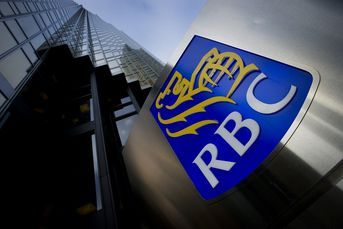Morgan Stanley’s Gorman seeks to tame broker compensation
Wirehouse CEO looks to reduce compensation to 55% of revenue from around 60% as brokers do more banking and lending.
This story was updated June 12.
Morgan Stanley chief executive James Gorman said that he’s looking to lower brokers’ payout relative to revenue as the firm focuses on hitting its stated goal of raising profit margins from 19% to as high as 22% to 25% by the end of 2015.
Compensation in the wealth management business could be reduced to 55% of revenue from around 60% last year, thanks in part to growth in banking and lending products, for which advisers receive less commission, he said. Growth in fee-based, or managed accounts, which provide higher revenue-per-dollar of client assets than commission accounts, would also help, he said.
“We’re very focused on overall compensation ratios,” he said at Morgan Stanley’s fifth annual financials conference on Tuesday.
Even at 55% of revenue, the compensation of the brokerage unit, which has around 16,500 advisers, would still be well above other divisions such as institutional securities, which are closer to 40%, he said.
“Before this recent wave of consolidation, what I would describe as the weaker national firms had comp-to-revenue ratios of high-60s,” Mr. Gorman said. “The reason they had that was they had to pay basically to keep the talent there. If the firm wasn’t as strong as what they were offering a financial adviser somewhere else in terms of platform support, research, product, whatever it might be, what cards did you have in your sleeve? The card you had was comp.”
LOWER RATE
Advisers are paid at a lower rate on banking products compared with some of the other services because they are considered “non-compensable,” meaning they are not applied to advisers’ traditional payout grid. Under the grid system, advisers receives a percentage of the revenue they generate depending on total annual production. A broker with $1 million in fees on assets under management or commissions from stock transactions, for example, could take home between 40% and 45%, just from those areas alone.
(Don’t miss: Scoring the wirehouses’ first-quarter results)
Revenue from a securities-backed loan or other non-compensable product, however, would not count toward the broker’s annual revenue. Instead, the adviser would receive a smaller monthly commission on the outstanding loan or a one-time payment for originating a mortgage.
Morgan Stanley spokesman James Wiggins declined to specify the size of those payouts. Although he acknowledged that they were lower, he said that doing more lending can provide brokers the opportunity to access additional rewards. Strong growth in loan balances can help an adviser earn up to $200,000 through the firm’s “growth bonus” system, which provides the top 40% of advisers in terms of asset growth with an additional cash reward.
Providing clients with banking products such as mortgages and securities-backed loans has been a big push at other wirehouses. UBS Wealth Management’s chief executive Robert McCann, for example, has said he wants as much as 50% of his brokerage force originating two or more mortgages each year.
“Lending business is a source of growth for institutional as well as our retail business,” Mr. Gorman said. “We believe it will continue to increase the stability and earnings of the firm as a whole.”
RECRUITING COSTS
Mr. Gorman also pointed to recruiting costs as another area that was propping up the expense ratios in the brokerage unit. The industry had reached a breaking point in the number of veteran financial advisers that could be traded back and forth between the largest brokerage firms, he said.
(See also: Wirehouses warm to bank channel recruits)
“There are four firms operating in this country and there are a couple of midsized firms, and after that, it’s the very small operators,” he said. “And those four firms can only hire so many people from each other so many times before they stop doing that, and we’re at that threshold point now, which I think is very exciting for industry stability.”
The focus on compensation expense ratios comes as Mr. Gorman said that the firm had entered a new stage of its life called “performance and growth.” That marked a departure from the last two years, which he characterized as “healing” in the aftermath of the acquisitions and turmoil of the financial crisis.
In an earlier version of this story Morgan Stanley chief executive James Gorman was cited as saying his firm is focusing on hitting its stated goal of raising profit margins from 19% to as high as 22% to 25% by the end of 2014. Mr. Gorman’s target is the end of 2015. In addition, the “growth bonus” system gives advisers with strong loan balances with credit toward to a $200,000 cash award. A previous headline incorrectly suggested that Mr. Gorman was seeking to cut broker payouts.
Learn more about reprints and licensing for this article.






